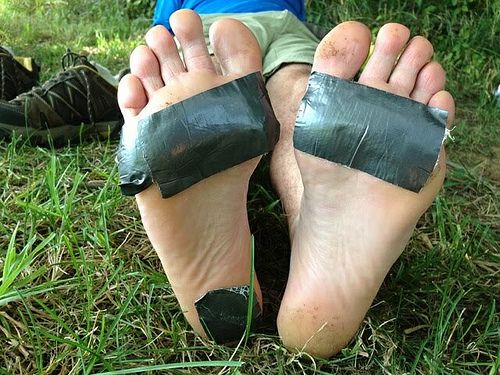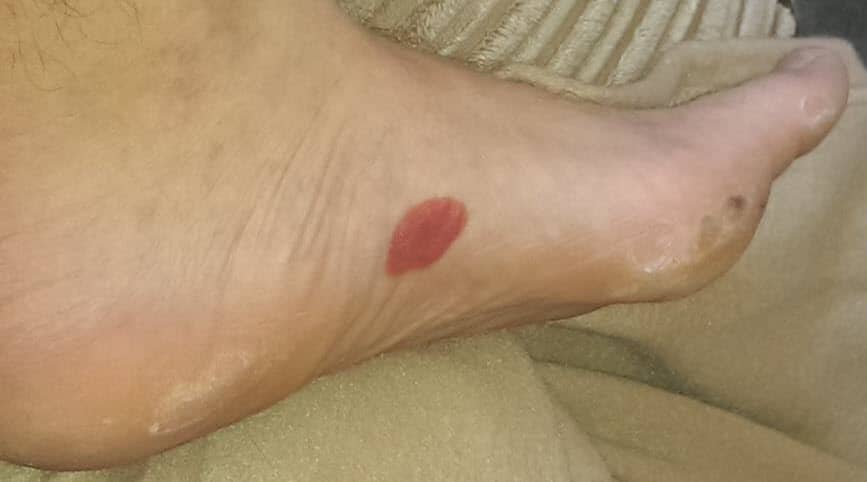Foot care is a subject all distance runners should know about, preferably before they suffer from foot problems!
No matter how well you’ve prepared and conditioned your feet prior to your run, you can’t predict what’s going to happen when you’re out on the trails.
During distance running events, many competitors have foot issues that require treatment at some point.

Foot Care 101 – Hot Spots
These are your first indication that something is up – a feeling of irritation coming from somewhere on your feet that doesn’t go away. When you feel a hot spot and recognise that it’s not going to disappear, it’s best to stop and check things out. Running through a hot spot will almost always make things worse.
It may just be caused by a bunched-up sock or some sand, and can easily be remedied in less than a minute. Or it may be the start of a bigger problem, like rubbing – which will lead to blisters.
Blisters

To pot or not to pop? Generally, if a blister forms during a long race, it’s unlikely to go away so it’s best dealt with earlier rather than later.
If the blister is red, then it is a ‘blood blister’ – and shouldn’t be popped unless its giving you a lot of discomfort. I always recommend checking with the medical crew if they are available, but here’s the rough guide to popping a blister yourself:
- Clean the area around the blister.
- Pop it with a sterilised needle around the sides – making 3 or 4 tiny holes around the blister helps keep it drained.
- Clean and dry the blister – do not remove any of the loose skin!
- Dress the blister with Elastikon / sticky dressing tape. The application style will depend on where your blister is, but generally you want to ensure the tape is applied completely flush with your foot (no folds), and is positioned to hold on. For example, if the blister occurs on the arch of your foot, wrap the tape around the bottom of your foot so there is a bit of grip – last thing you want is the tape to come off and have to re-dress the blister later.
Foot Maceration
Some people call this trench foot – it’s basically when the skin of your your feet is saturated in water. Imagine what your feet look like after half an hour in a hot bath and you’re in the right ballpark – picture running an ultra on those. They are much more susceptible to blisters and wounds. Many runners who train in cold, dry climates experience foot maceration when they run in hot, humid countries – or when their feet get wet.

The best way to prevent foot maceration is to keep your feet dry. First and foremost, this means aiming for wicking socks and breathable shoes – i.e. footwear that drains and doesn’t hold water easily. Secondly, it means avoiding water crossings if possible – and if you can’t avoid them, assessing whether a change of socks would be prudent when you come out the other side. Thirdly, and hopefully unnecessary, is using products such as gels and powders that keep your feet dry (such as talcum powder).
And what to do if you suffer from foot maceration? The number one cure is to let your feet dry out – hopefully you’ve made it to the end of the day with your feet still holding up, so whip off your socks and air out your soles. Hopefully you’ve got some dry gear to throw on in the morning. A dry dressing may go some way to pulling some of the moisture out and providing some cushioning for when you have to get back to the trails.
By the way, the absolute bible on distance running footcare is the book ‘Fixing Your Feet’ by John Vonhof.
Seriously, I can’t recommend this book enough!
If you’re getting into distance running, buy this book!













